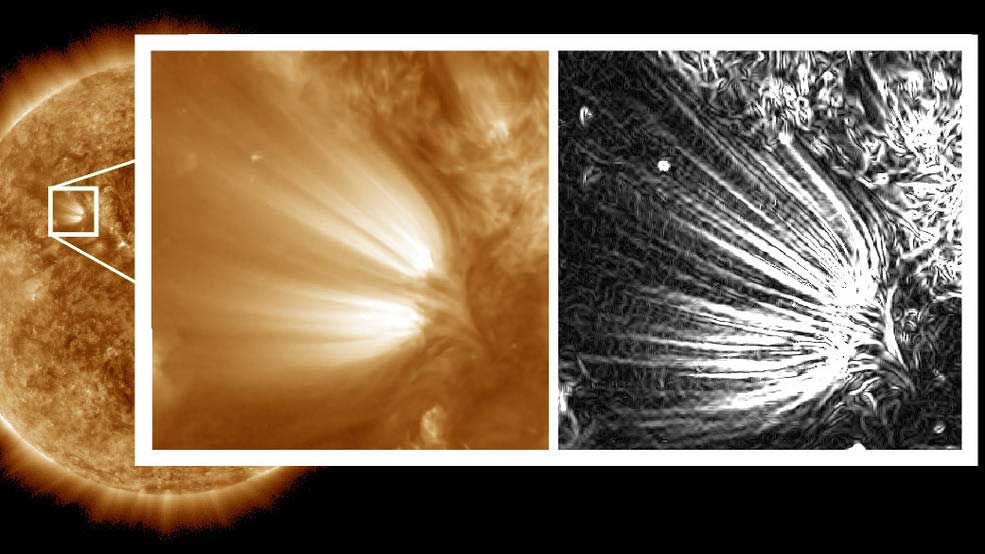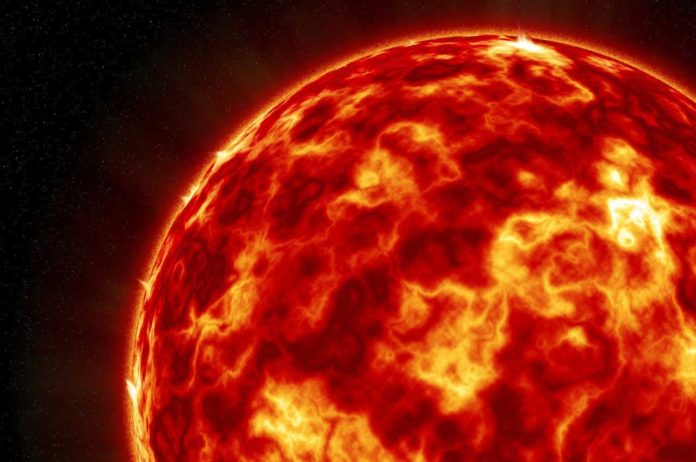By combining NASA data and advanced image processing, scientists offer new insight into the solar structures that create the Sun’s flow of high-speed solar wind. This first gander at moderately small features, named “plumelets,” could help scientists see how and why disturbances form in the solar wind.
The orbit of planets is driven by force called the solar wind. The constant outflow of the material shapes the environments around Earth, other worlds.
Changes in the solar wind can create space weather effects that influence the planets, humans, and satellites.
According to a new study, relatively small, previously-unexplored features close to the Sun’s surface could play a crucial role in the solar wind’s characteristics.
Vadim Uritsky, a solar scientist at the Catholic University of America and NASA’s Goddard Space Flight Center, who led the study, said, “This shows the importance of small-scale structures and processes on the Sun for understanding the large-scale solar wind and space weather system.”
Magnetic forces control the solar wind. And the magnetic forces in the Sun’s atmosphere are incredibly complex: The solar surface is threaded through with a constantly-changing combination of closed loops of the magnetic field and open magnetic field lines that stretch out into the solar system.
Along with these magnetic field lines, solar wind escapes from the Sun into space. Areas of open magnetic field on the Sun can create coronal holes.
These coronal holes are embedded with plumes that appear bright in extreme ultraviolet views of the Sun. These plumes are assumed to create a significant part in creating high-speed solar wind.

Astronomers used high-resolution observations from NASA’s Solar Dynamics Observatory satellite, or SDO, along with an image processing technique. They found that these plumes are made from much smaller strands of material, called plumelets. In contrast to plumes, which stretches out across about 70,000 miles in SDO’s images, each plumelet strand’s width is only a few thousand miles across, ranging from around 2,300 miles at the smallest to about 4,500 miles in width for the widest plumelets observed.
This is for the first time that scientists have observed plumelets in sharp focus. The technique they used was specially developed for this work. The method reduced the “noise” in the solar images, creating a sharper view that revealed the plumelets and their subtle changes in clear detail.
Scientists also discovered that the plumelets are responsible for the plume’s brightness. It means plumelets are the building block of plumes.
Another interesting fact of these plumelets is that they move individually, each oscillating on its own. Meanwhile, even a small movement creates a big disruption in the solar wind.
Judy Karpen, one of the authors of the study and chief of the Space Weather Laboratory in the Heliophysics Science Division at NASA Goddard, said, “People have seen structure in and at the base of plumes for a while. But we’ve found that the plume itself is a bundle of these denser, flowing plumelets, which is very different from the picture of plumes we had before.”
Journal Reference:
- V. M. Uritsky et al. Plumelets: Dynamic Filamentary Structures in Solar Coronal Plumes, The Astrophysical Journal (2021). DOI: 10.3847/1538-4357/abd186
